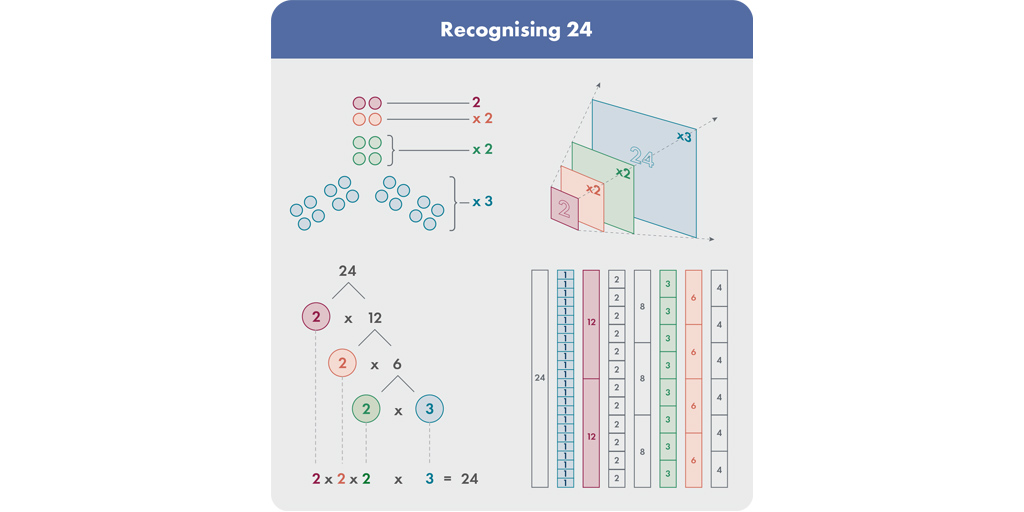01 August 2022

What does research suggest about the teaching around factors, multiples and prime numbers?
- Decomposing numbers to investigate their multiplicative structure can support a flexible approach to problem solving and should come before the introduction of rules or procedures
- Activities in which students: sort objects into regular arrays of width two; explore which numbers can be split into two equal groups; and also into equal groups of two, all support conceptual understanding that even numbers are divisible by two
- Students need to link doubling to multiplying in order to appreciate that it will always result in an even number
- Visualising building numbers by scaling or growing, rather than by repeated addition, helps support multiplicative reasoning and generalising
- Working with characteristics of primes can help avoid misconceptions about their size and prevalence as factors of other numbers
- Practising seeing prime factors both individually or in combinations, can help support flexible reasoning about the divisibility of the whole number
- Making links between different methods of finding the lowest common multiple of two numbers can support conceptual understanding; Venn diagrams are suggested as useful ways to visualise common prime factors of two numbers
View EspressoView References